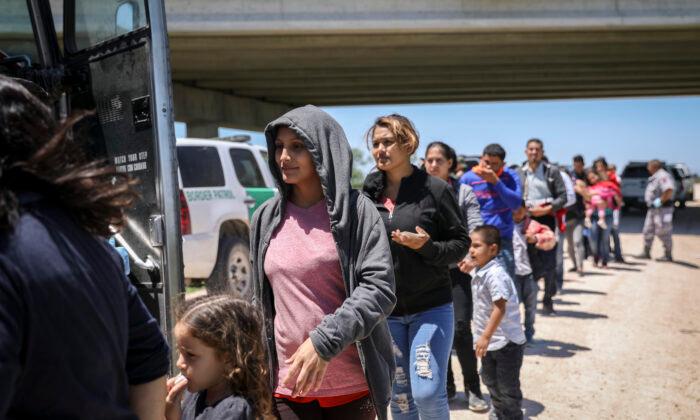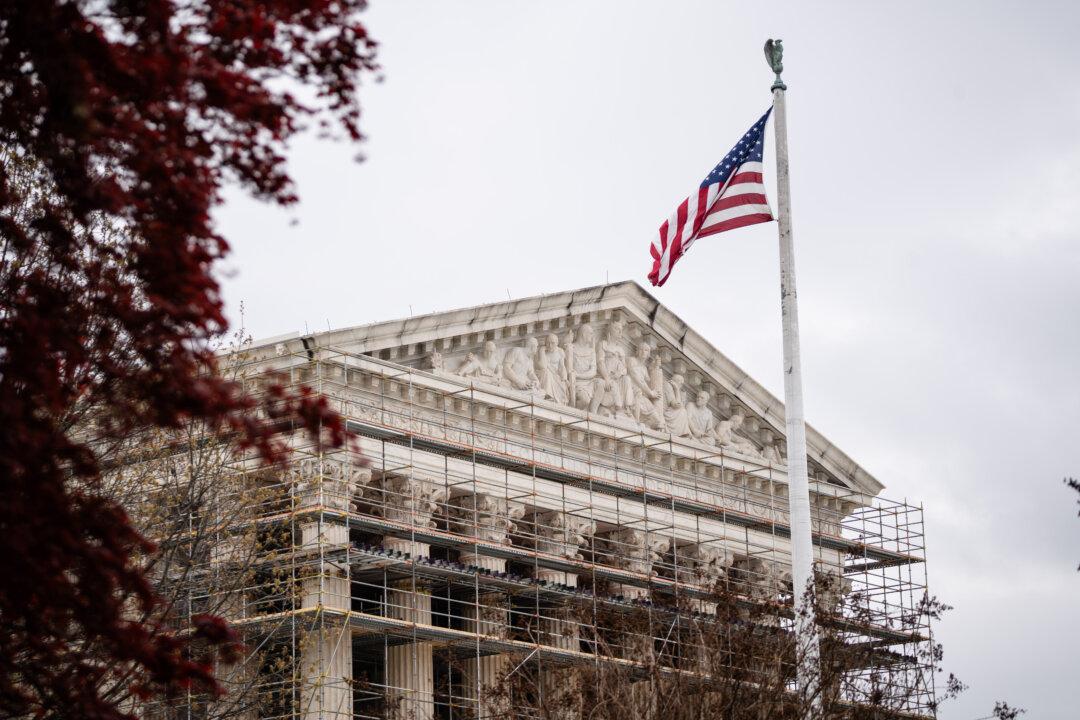Illegal aliens are gravitating to so-called sanctuary cities in states with small immigrant populations where they strain local finances because they consume as much as $6,000 in taxpayer-funded services annually over and above any fiscal benefit they generate, according to a new study.
The administration’s “public charge” rule aims to make sure future immigrants to the United States can support themselves without becoming a burden on taxpayers. America needs people who are “able to stand on their own two feet,” Ken Cuccinelli, acting director of U.S. Citizenship and Immigration Services (CIS), said of the rule in August 2019.
Many illegal aliens move to “smaller, less populated states because they receive less attention from immigration enforcement agencies than either the border states or the metropolises commonly associated with high levels of illegal immigration,” the study states.
“Many local officials tout immigration, including illegal immigration, as a remedy to economic stagnation,” Dan Stein, president of FAIR, said in a statement. “However, as this report reveals, the reality is precisely the opposite.”
“Illegal immigration, in particular, drives down wages and inhibits job opportunities for legal residents, while bringing more low-skilled, low-wage workers to these states,” Stein said. “In turn, this increases costs to state and local governments and discourages investment by businesses seeking a skilled labor force and lower overhead.”
The report states that “lax immigration policies have a profound impact even on those states with small immigrant populations.” The expanding influx of new people hits smaller states hardest “because such states typically have fewer jobs available and condensed economies, making it harder to absorb newcomers.”
The report looks at the 10 states with the smallest foreign-born populations—Alaska, Maine, Mississippi, Montana, New Hampshire, North Dakota, South Dakota, Vermont, West Virginia, and Wyoming—to determine how high rates of U.S. immigration have affected them. There are about 29 sanctuary jurisdictions in these states, whose policy is to refuse to cooperate with U.S. Immigration and Customs Enforcement (ICE), according to FAIR.
About 415,000 foreign-born individuals live in the 10 states, and around 21 percent—or 88,000 people—are unlawfully present in the United States, and these illegal aliens cost U.S. taxpayers $454 million dollars annually, the study states.
“To put that figure into context, that $454 million expenditure is more than 200 times what the state of Montana budgets for its entire Veterans Affairs program, and it is 2.5 times the total sum that West Virginia invests in its state university,” according to the report.
A Different Take
Michelle Mittelstadt, director of communications for the left-leaning Migration Policy Institute, didn’t express an opinion about the FAIR report, but said it was “incredibly difficult to provide a complete picture of the costs and benefits of immigration.”“Immigrants are not just users of services, they are also workers who generate tax payments and consumers whose consumption creates value in the economy,” she told The Epoch Times in a statement. “So, capturing the costs and benefits across the economy requires consideration of a range of factors, not all of which are easily measurable.”
Mittelstadt pointed to a 2016 report by the National Academies of Sciences, Engineering, and Medicine that looked at economic and demographic trends in U.S. immigration over the previous 20 years. That study, which reviewed “the vast research literature on immigration to come up with a picture of the fiscal impacts of immigration,” is “probably the most seminal piece of work on this subject in two decades,” she said.
“Some evidence on inflow of skilled immigrants suggests that there may be positive wage effects for some subgroups of native-born workers, and other benefits to the economy more broadly.”
The report acknowledged that “first-generation immigrants are more costly to governments, mainly at the state and local levels, than are the native-born, in large part due to the costs of educating their children.”
But as adults, the children of immigrants “are among the strongest economic and fiscal contributors in the U.S. population, contributing more in taxes than either their parents or the rest of the native-born population.”
Immigrants generally have a positive fiscal impact at the federal level but have a negative impact at state and local levels, the report states.





